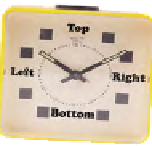HTML and CSS Reference
In-Depth Information
Q:
Should I always use shorthand?
A:
Not necessarily. Some people find the long form more
readable. Shorthands do have the advantage of reducing the size
of your CSS files, and certainly they are more quickly entered
because they require less typing. However, when there is a
problem, they are a little more difficult to “debug” if you have
incorrect values or the wrong order. So, you should use whichever
form is more comfortable because they are both perfectly valid.
Q:
Shorthands are more complex because I have to
remember the ordering and what is and isn't optional. How do
I memorize it all?
A:
Well, you'll be surprised how quickly it becomes second
nature, but those of us in the “biz” have a little secret we like to
call a “reference manual.” Just pick one up, and should you need
to quickly look up property names or the syntax of a property,
just grab your handy reference manual and look it up. We're
particularly fond of the
CSS Pocket Reference
by Eric Meyer.
It's tiny and makes a great reference.
It's time to put all your new knowledge to work. You'll notice that at the bottom of the
lounge, there's a small section with copyright information that acts as a footer for the
page. Add a <div> to make this into its own logical section. After you've done that,
style it with these properties:
Let's make the text
really small.
You know, FINE PRIN
T.
And
let's center the text.
font-size: 50%;
text-align: center;
line-height: normal;
margin-top: 30px;
And while you're at it, have a look over the entire “lounge.css” file. Is there anywhere you
might want to simplify things with shorthands? If so, go ahead and make those changes.
















